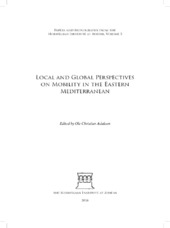| dc.contributor.author | Kremer, Christoph | |
| dc.date.accessioned | 2020-10-26T13:00:43Z | |
| dc.date.available | 2020-10-26T13:00:43Z | |
| dc.date.issued | 2016 | |
| dc.identifier.isbn | 978-960-85145-5-3 | |
| dc.identifier.issn | 2459-3230 | |
| dc.identifier.uri | https://hdl.handle.net/1956/24300 | |
| dc.description.abstract | This contribution discusses the connectivity of the Mediterranean during the Early Iron Age. In contrast to already well explored tropes like the adoption of banquet equipment and warrior ideology as institutionalised forms of networks based on hospitality, the focus of will be laid upon the too looked overlooked role that women might have had in these. In this regard will selected object categories of the funerary assemblage from early Iron Age graves of females in Italy and the Eastern Mediterranean be discussed. Especially the wide distribution of parts of the female attire - in this case study faience bead necklaces - highlight the flow of objects and symbolisms connected to them in the Early Iron Age Mediterranean. This shared sign system is furthermore explored by a study of textile tools in part of these graves. These similarities in the funerary customs hint to a much deeper interaction between the two study areas beyond a mere trade of ‘exotic’ goods. In both region these objects expressed a part of a female identity. These identities are a connecting factor between the two regions, expressed in a local way. | nob |
| dc.language.iso | eng | nob |
| dc.publisher | The Norwegian Institute at Athens | nob |
| dc.relation.ispartofseries | Papers and Monographs from the Norwegian Institute at Athens. volume 5 | nob |
| dc.title | Weaving identities - local and global customs between Early Iron Age Italy and Greece | nob |
| dc.type | Chapter | nob |
